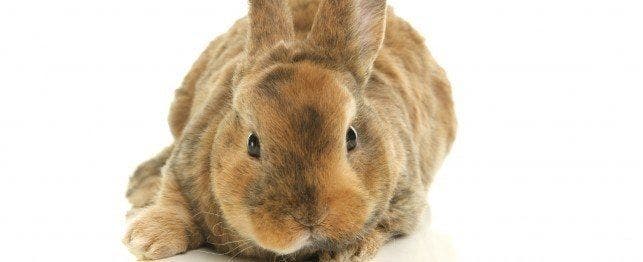
Choosing a Rex Rabbit
First discovered in France, the rex rabbit was originally so uncommon that inbreeding was necessary to perpetuate the breed. This resulted in weakness and illness. With perseverance and dedication, breeders eventually improved the breed and today, the rex is a hardy breed with a soft velvety coat.
History and Origin
In 1919, a French farmer checked on his new litter of kits born from his ordinary gray doe. One of those kits had a mutation of the hair coat resulting in the guard hairs being shorter than the undercoat. The subsequent litter from the doe had another kit with the same mutation. Luckily for the farmer, this kit was the opposite sex of the original and those two were bred. The first litter of these mutated rabbits were presented to a French priest, who is credited with perpetuating the rex rabbit breed. By 1924, the rex rabbit was developed enough to be exhibited in Paris.
The hair coat of the rex rabbit is their most significant characteristic. The rex hair coat occurs when the guard hairs are shorter than the undercoat. This results in a lustrous and velvety coat and these rabbits are highly prized for their fur and pelts.
Appearance
Despite having more than 50 colors and varieties, the rex rabbit can be divided into four types – smooth coat, astrex, miniature rex and opossum rex.
The smooth coated rex is considered the standard. The astrex is rare and is distinguised by tightly wavy fur. The miniature rex is just what the name implies – a smaller version of the standard weighing around 3 pounds. The opossum rex is another uncommon type with a silvery coat. The rex rabbit, except for the miniature, weighs around 7 to 10 pounds and is considered a medium sized rabbit. The ears are erect and the rabbit’s muscles are well developed.
The hair coat is the most important part of the breed. The guard hairs are shorter than the undercoat, which results in a plush, springy feel. The length of the hair is important – to be defined as a rex, the hairs are at least a half-inch long but not longer than 7/8 inch.
There are many different color varieties and there is even controversy that some of these color varieties may actually be different breeds. Despite the many color options, black tends to be the most common.
As the rex breed gains in popularity, don’t be surprised if various other mutations and new breeds develop.
Feeding
Commercial rabbit pellets are recommended. Feed 1/4 cup of pellets per 5 pounds of body weight every day. For rabbits under 8 months of age, feed unlimited plain alfalfa pellets. Fresh rinsed greens, vegetables, and fruit, as well as grains and hay, can then be given as supplements. Free choice hay, such as timothy, should always be available and changed daily, but alfalfa hay should not be offered free choice to rabbits over 8 months of age.
Housing
Many rabbits do very well in the home. They can be litter box trained and are quite fastidious groomers. Be aware that rabbits love to chew so make sure all wires are safely hidden or in protective plastic covers and understand that some of your furniture may be nibbled. If you choose to cage your rabbit, make sure the cage is at least 2 feet by 2 feet by 4 feet. If the cage has a wire bottom make certain you give the rabbit a plank or sea grass mats to stand on so his feet won’t get damaged from being on the wire all the time. Provide a hide box or shelter and plenty of straw for bedding.
Health Concerns
As with other rabbits, rex rabbits do not do well in high or low temperatures. They are prone to hairball obstructions and matted coats if not cared for properly. Rabbits need daily grooming to remove loose hair. Other health concerns include earmites, Pasteurella, respiratory disease, dental problems, urinary bladder stones and fractured backs. Be quick to notice any changes in diet or litter box habits and contact a rabbit veterinarian immediately.
The average life span of a breeding rex rabbit is 5 to 6 years. By spaying or neutering early in life, you can increase their life expectancy to around 10 years.